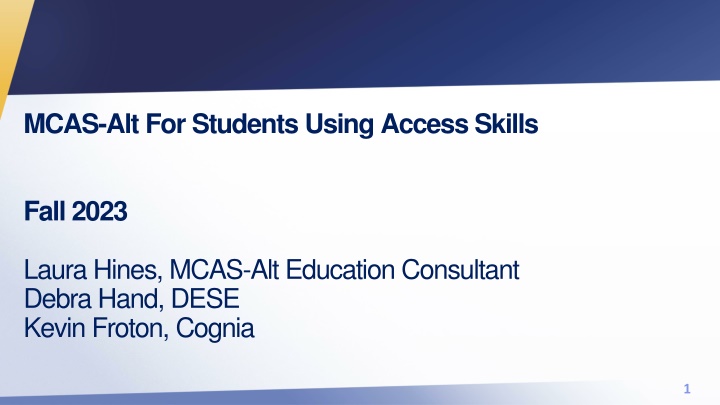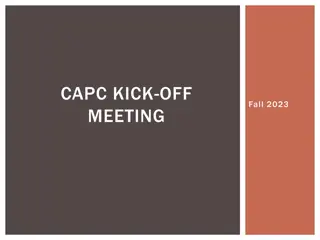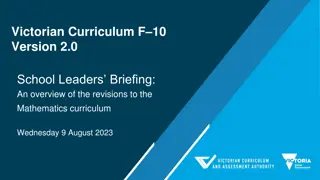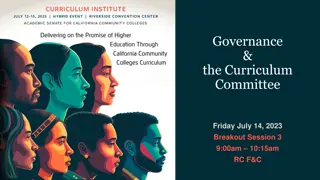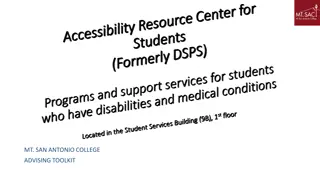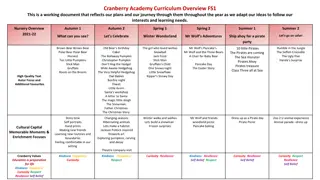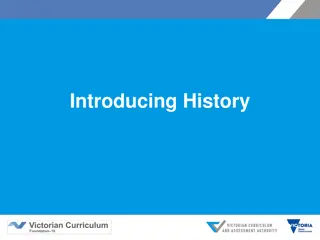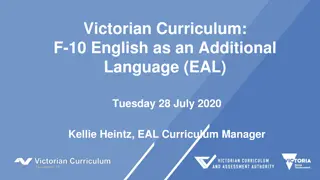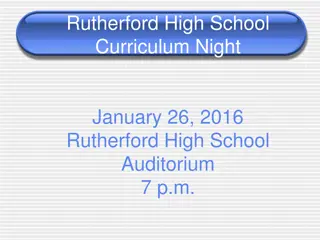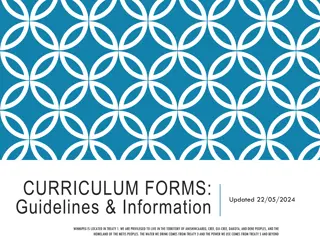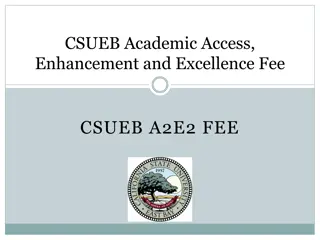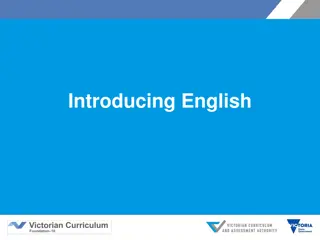Importance of Access Skills in Academic Curriculum
Access skills play a crucial role in ensuring that students with diverse needs can engage with academic content effectively. This includes addressing individualized entry points, utilizing low-level tasks, and providing appropriate support for students with varying abilities. Access skills help in making curriculum more inclusive and accessible for all learners, regardless of their challenges or limitations.
Download Presentation

Please find below an Image/Link to download the presentation.
The content on the website is provided AS IS for your information and personal use only. It may not be sold, licensed, or shared on other websites without obtaining consent from the author.If you encounter any issues during the download, it is possible that the publisher has removed the file from their server.
You are allowed to download the files provided on this website for personal or commercial use, subject to the condition that they are used lawfully. All files are the property of their respective owners.
The content on the website is provided AS IS for your information and personal use only. It may not be sold, licensed, or shared on other websites without obtaining consent from the author.
E N D
Presentation Transcript
MCAS-AltForStudentsUsingAccess Skills Fall 2023 Laura Hines, MCAS-Alt Education Consultant Debra Hand, DESE Kevin Froton, Cognia 1
What are Access Skills? Learning Standards Grade Level Entry Points Access Skills 2
How the Resource Guide is Organized Essence of the standard: Solve mathematical problems involving 3-D shapes Standard Grade 8 8.G.9 Know the formulas for the volume of cones, cylinders, and spheres, and use them to solve real-world and mathematical problems. Sort two- dimensional shapes by attribute (e.g., number of sides) Calculate the surface area of a cube Match the same shapes with different orientations Visually track geometric shapes Access Skill Grade Level Entry points Less Complex More Complex 3
Who is NOT addressing access skills.. Tenth-grade student who is reading at a first-grade level is NOT addressing the curriculum at an access level Eighth-grade student with significant behavioral issues who refuses to write, who will only shout answers from under a desk is NOT addressing the curriculum at an access level These students can address the academic content 4
Who is NOT addressing access skills.. Sixth-grade student with an emerging communication system who can only answer simple questions by eye gazing to the correct response from a field of three icons is NOT addressing the curriculum at an access level Third-grade student who is being marked inaccurate for grasping the wrong manipulative when asked to match a shape drawn on a paper, is NOT addressing the curriculum at an access level 5
Who is NOT addressing access skills.. If you are taking data on the accuracy of the icon or shape chosen that is academic content, a measurable outcome based on a low-level entry point is most likely appropriate. Examples of low entry points: Match words or pictures to objects/icons or symbols (Language, p.140) Identify the main character in a literary text (Reading, p.15) Answer yes/no questions related to numbers, quantities, or counting (Number and Operations in Base Ten, p. 43) 6
The Importance of Access Skills Although a student s IEP objectives may be the overriding learning focus for that student, providing him or her with the opportunity to practice those objectives in the context of the general classroom and to receive instruction on those objectives in the context of general education activities represents one fundamental way of ensuring that students with significant disabilities do participate in the general curriculum. --Kleinert, H.L. & Kearns, J.F. (2001). Measuring outcomes and supports for students with disabilities. Baltimore: Paul H. Brookes Publishing Co. 7
IEP Goal (as written) Lee will grasp a toothbrush for 2 to 4 seconds. (This is not a standards-based activity) WHAT S THE CRITICAL SKILL IN THIS GOAL? GRASPING ReframedGoal: Given a tool, Lee will be able to grasp it for 2 to 4 seconds without dropping it in 50% of sessions observed. 8
Critical Skills Become the Access Skills that Allow Students to be Assessed During a Standards-Based Activity Grasp materials as they are counted. (Mathematics The Number System) Grasp materials representing a key idea or detail in a story, poem, folktale, or myth. (ELA Reading-Literature) Grasp materials in an investigation about living and non-living. (High School Science and Technology/Engineering Biology) 9
Select an Appropriate Access Skill from the Resource Guide to Create a Measurable Outcome 10
Latency Mastery for this task Measurable outcome includes the access skill + criteria that indicate how the observer will know that the student has successfully performed the task (e.g., latency), including criteria for mastery (e.g., in 80% of sessions observed.) 11
Educators Manual, p. 28 Core Set of Evidence A complete strand must include at leastthe following core set of evidence. Data Chart Strand Cover Sheet attached to each strand being submitted First piece of primary evidence (Teacher- documented work sample, photo, or video) Second piece of primary evidence (Teacher- documented work sample, photo, or video) Skills Survey administered in each strand + + + + Bar, Line or Field Data Chart documenting the measurable outcome on at least 8 different dates Except unique requirements for ELA Writing and Science and Tech/Eng (STE) 12
DATA CHARTS LINE GRAPH BAR GRAPH FIELD DATA CHART 13
Measurable Outcome . choose from an array of 2 errorless choices within 15 seconds of a directive related to vocabulary acquisition with 75% accuracy and 100% independence Brief descriptions on the data chart must reflect the skill (i.e., choose from an array of 2), and the standards-based activity. (i.e., Synonym Go Fish, synonym worksheet, synonym Jeopardy, synonym poster). 14
Poll Question Are you familiar with the term errorless choices? Yes No Maybe, but I could use a refresher 15
Errorless Choice Errorless choice learning ensures that students are always: responding correctly, building their confidence, and increasing their knowledge at the same time. Promotes independent responses vs. prompt reliance Implies intentionality Reinforces response/participation 16
Teacher-Documented Work Sample Label with name, date, overall % accuracy, and % independence. Document a series of trials conducted during the same activity. Specifically describe the materials and context of the activity o Expected response (if appropriate), and the student s actual response (accuracy and independence) clearly show how accuracy and independence were determined on each trial. NOTE: Examples of teacher-documented work samples are available on the following slides. 17
Barry 9/29/23 Teacher-Documented Work Sample Teacher-documented work samples describe materials, and the context of the activities, and document responses on a series of trials conducted at the same time. Student s responses Session 1: 5 Trials (Continued on page 2) 18
Indicates the students response (Cont d) Session 2: 5 Trials All blocks were placed back on the Velcro strip to start the process again. 9/29/23 Overall accuracy and independence for all trials completed on the same day. 19
Teacher-Documented Work Sample (example) Indicates the student s response This teacher- documented work sample describes materials, number of trials, and latency for each response. 10/16/23 Overall accuracy and independence 20
Supporting Documentation for Teacher-Documented Work Sample Does not show a final product or how the student participated. Only shows the context of a learning activity The technology shown above is used by the student to advance a computer program within 15 seconds of a directive on Ratio and Proportional Relationships. 21
Work Sample Description for Teacher-Documented Sample After reading an informational text The Polar Region, the student was presented with a pre- recorded switch with the message more please. Student 10/6/23 The student s responses were recorded to determine if the switch was activated within 30 seconds after the reading stopped. 22
Teacher-Documented Work Sample (example) 10/6/23 Student Book Cover A thumbnail picture of each page documenting the accuracy and independence of each trial. (See measurable outcome and description on Work Description label) 23
Another Teacher-Documented Work Sample: Using a Series of Pictures Trial 1 Trial 1 Trial 1 Trial 2 Trial 2 Trial 2 Measurable Outcome: The student will locate objects partially hidden or out of sight of Earth, Moon, Sun, stars, solar system, or seasons activity with 80% accuracy and 80% independence. Student 1/18/18 Date: 1/10/24 100% Accuracy 50% Independence 24
Thinking About Self-Evaluation Student choice-making and evaluation of one s own work are essential components of self-determination, which is an important predictor of successful post-school outcomes. (Wehmeyer & Palmer, 2003; Wehmeyer & Schwartz, 1998) --Kleinert, H. L. & Kearns, J.F. (2010). Alternate Assessment for students with Significant Cognitive Disabilities. Baltimore: Paul H. Brookes Publishing Co. 25
Self-Evaluation: Students Making Choices within a Standards-Based Activity Choice of: materials response format order of events partner continuing or terminating the activity Do you see evidence of the student s voice in the self-evaluation? Is it authentic? 26
Examples of Self-Evaluation Student She Self -Evaluation Self -Evaluation 27
Contact Information Additional Access Skills Materials: www.doe.mass.edu/mcas/alt/resources Debra Hand, MCAS-Alt Coordinator Debra.d.hand@mass.gov MCAS-Alt Forms and Graphs online: Sign In (measuredprogress.org) 28
